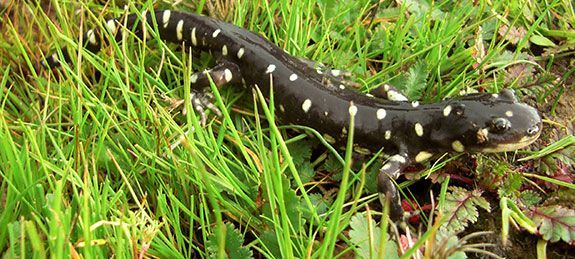Monumental Questions - Summer Survival

How does wildlife survive the hot summer in the Monument?
Species have developed many different strategies to survive unfavorable weather where they live. Some animals migrate - geese, Monarch butterflies, caribou. Others "sleep"- the classic example being bears hibernating in winter. Hibernation is a state of inactivity and metabolic depression in animals with lower body temperatures, slower breathing, and lower metabolic rates.
In the Berryessa Snow Mountain National Monument, the winters are not cold enough to require bears to hibernate, they become "seasonally lethargic" and limit their activity. In the monument, the unfavorable season for many species is the hot and dry summer.
- California Tiger Salamanders (Ambystoma californiense) are endemic to California. They live in grasslands and low foothills with ponds, pools, or vernal pools which are used for breeding. These salamanders estivate underground during the dry summer and usually emerge in November.
- Banana Slugs (Ariolimax columbianus) can be found in the leaf litter throughout the monument - including Stebbins Cold Canyon - during the cool and wet winters. In the summer, these mollusks will cover itself with soil and leaves and protect itself with a thick layer of mucus!
- California Ground Squirrels (Otospermophilus beecheyi) are found throughout California and have coevolved with rattlesnakes. They have many different strategies to survive around snakes, including chewing the shed skin and rubbing it on their fur! When it gets to be too hot, these squirrels may estivate in their underground burrows for a couple of days.
- A common plant in the monument also estivates: the California Buckeye (Aesculus californica)! These trees are often the first deciduous trees to regrow their leaves in the spring and usually drop their leaves by mid-summer to limit moisture loss in the hot sun.
If you have questions about Berryessa Snow Mountain National Monument that you would like us to address, please email them to Nate Lillge (nlillge@tuleyome.org) or Kristie Ehrhardt (kehrhardt@tuleyome.org). More information can be found at www.BerryessaSnowMountain.org.
RECENT ARTICLES






